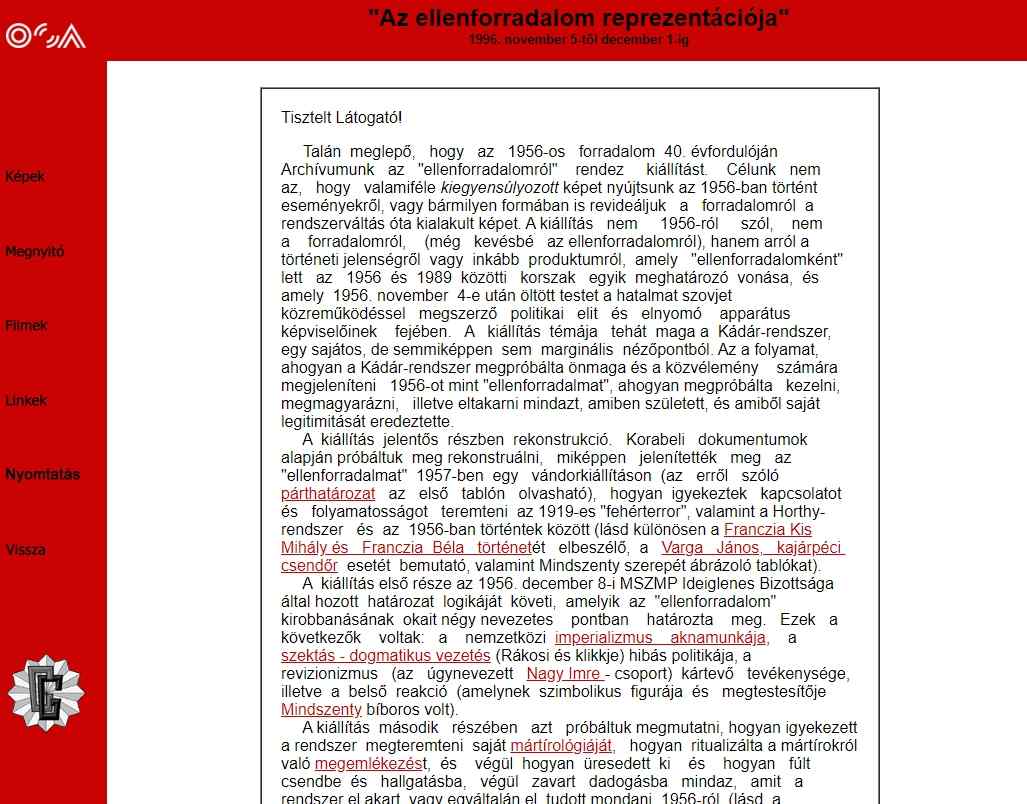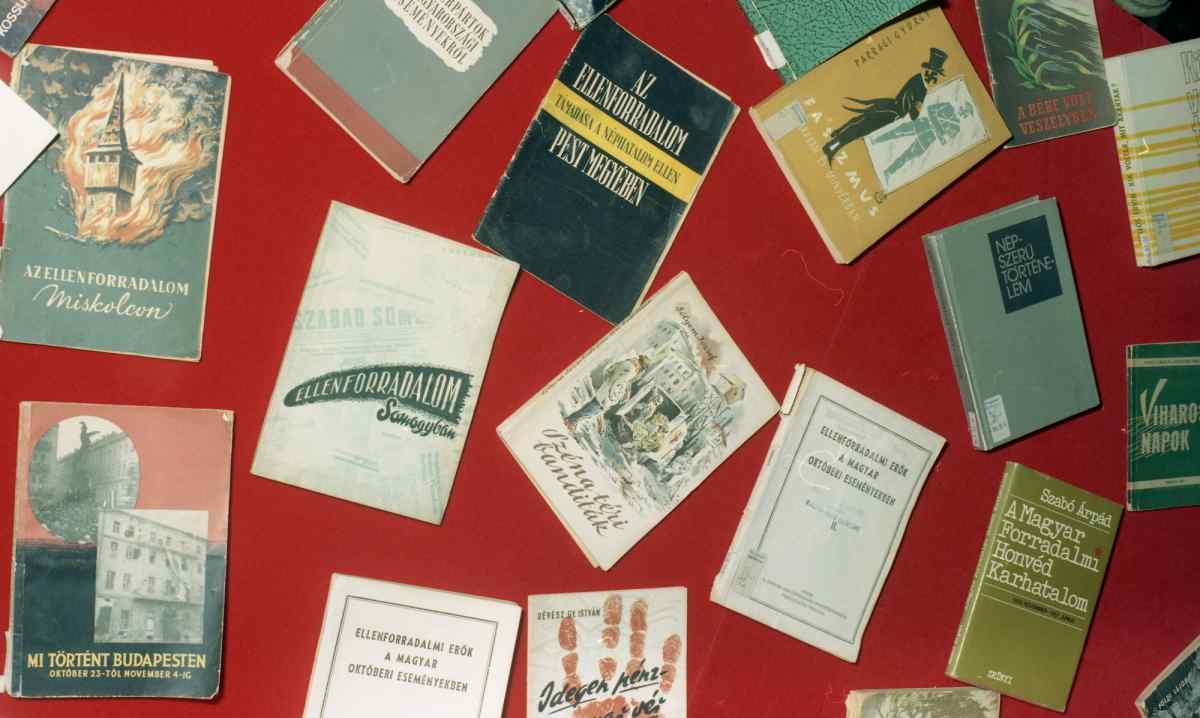The Representation of the Counter-Revolution
The Kádár-regime’s Image of 1956 (ONLINE)


Online version of the exhibition held at the Galeria Centralis (in Hungarian).
It may come as a surprise that on the 40th anniversary of the 1956 revolution, our Archives are organizing an exhibition on the “counter-revolution”. Our aim is not to present some kind of balanced view of the events of 1956, or in any way to revise the image of the revolution that has emerged since the change of regime. The exhibition is not about 1956, not about the revolution (still less about the counter-revolution), but about the historical phenomenon, or rather the product, which became one of the defining features of the period between 1956 and 1989 as a “counter-revolution”, and which took shape after November 4, 1956 in the minds of the political elite and the repressive apparatus that gained power with Soviet complicity. The theme of the exhibition is therefore the Kádár regime itself, from a specific but by no means marginal perspective. The process by which the Kádár regime tried to present 1956 as a “counter-revolution” to itself and to the public, the way it tried to deal with, explain and conceal all that it was born in and from which it derived its legitimacy.
The exhibition is largely a reconstruction. We have tried to reconstruct, on the basis of contemporary documents, how the “counter-revolution” was presented in 1957 in a traveling exhibition (the party resolution on this can be read on the first table), how they tried to establish a link and continuity with the “white terror” of 1919, and between the Horthy regime and what happened in 1956 (see in particular the panels telling the story of Mihály Franczia Kis and Béla Franczia, the case of János Varga, a gendarme from Kajárpéc, and the role of Cardinal Mindszenty).
The first part of the exhibition follows the logic of the decision of the Provisional Committee of the MSZMP of 8 December 1956, which defined the causes of the outbreak of the “counter-revolution” in four notable points. These were: the mine-work of international imperialism, the misguided policies of the sectarian-dogmatic leadership (Rákosi and his clique), the pernicious activities of revisionism (the so-called Imre Nagy group), and internal reaction (of which Cardinal Mindszenty was the symbolic figure and embodiment).
In the second part of the exhibition, we tried to show how the regime tried to create its own martyrdom, how it ritualized the commemoration of the martyrs, and how, in the end, everything the regime wanted to say, or could say, about 1956 fell into silence, and finally into a confused stutter (see the tables on consolidation and the “popular uprising or counter-revolution” debates).
The exhibition is complemented by audio and visual documents. We would like to draw your attention to the Radio Cabaret of October 1981 (see the installation “Silence”), or to János Kádár’s last speech at the Central Committee meeting on April 12, 1989 (see the installation “What János Kádár says” in the video room).
The online version of the exhibition is available at the following link (in Hungarian).